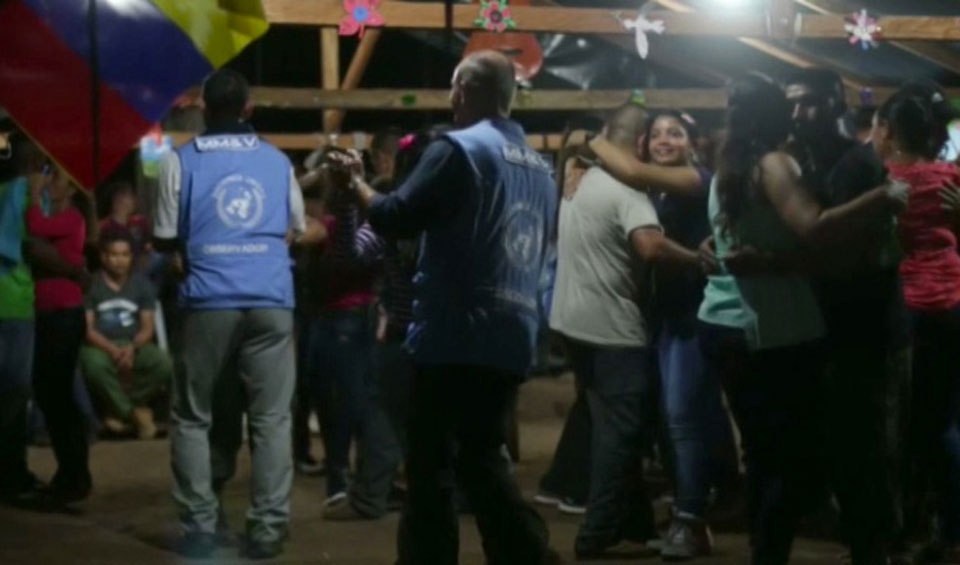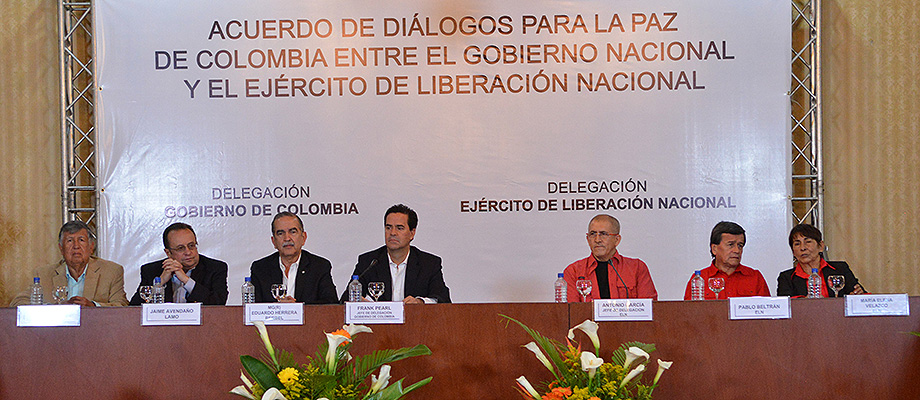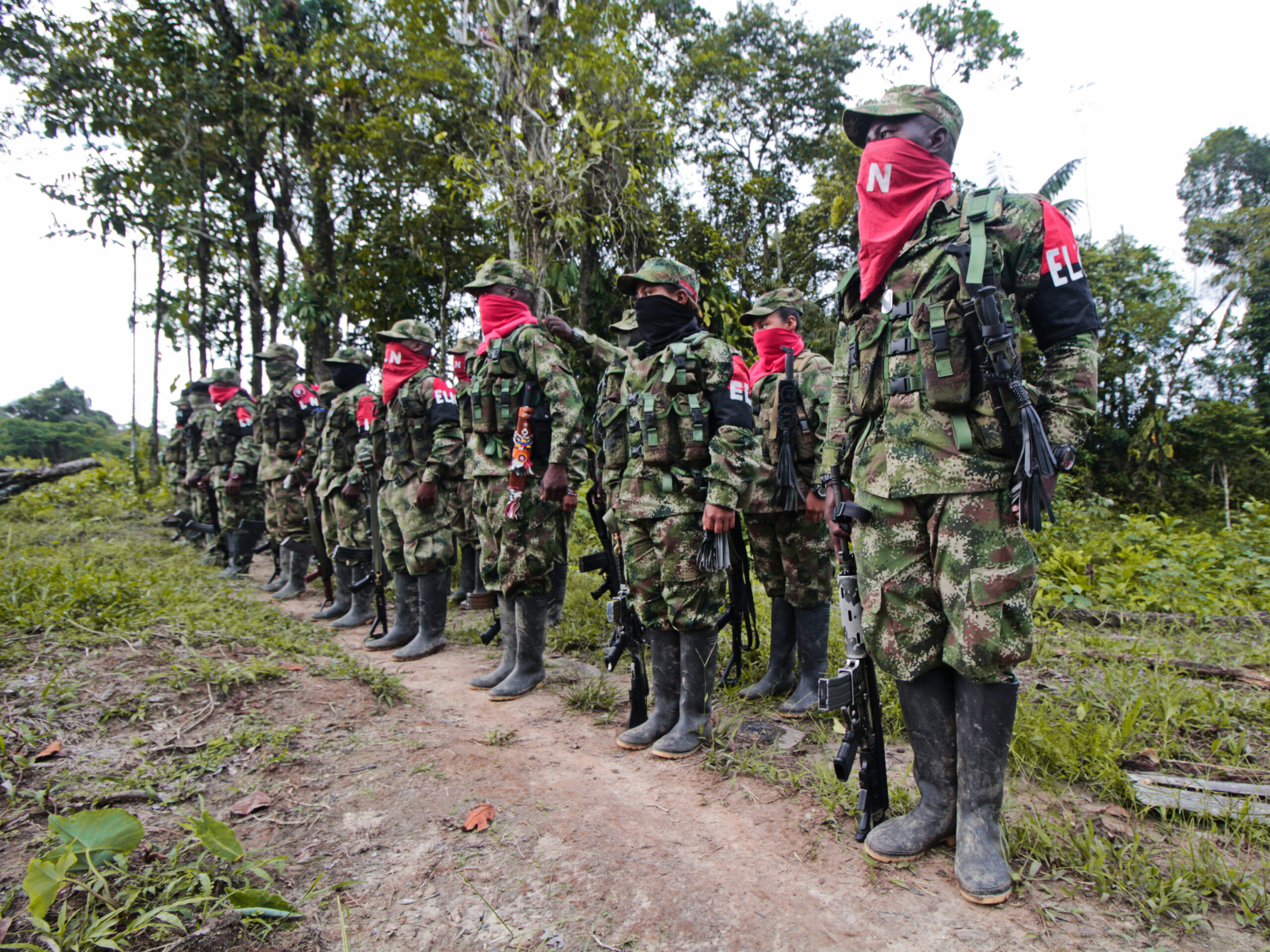
UN observers dancing with FARC members in one of the transitional zones.
The new year for Colombia begins with the first major steps towards peace, following the historic signing of an agreement between the government and the FARC last year. Emma Newbery examines some of the teething problems and how they are being addressed.
Nobody said it would be easy. In fact, lots of people said it would be quite hard. And they are being proved right: as the country sets sail on its long journey towards the clear seas of a lasting peace, it is already having to navigate its way through some tricky waters.
On paper it all looked pretty simple. The day that the deal was signed would be D-Day, which would mark the start of a six-month disarmament process. On D-Day plus five, FARC members would start to move into transitional zones. The process of transporting the arms and munitions to the zones would take place between D-Day seven and D-Day 30. By D-Day 90, 30% of the arms should have been handed over and by D-Day 180 (six months), the FARC would be fully disarmed.
But just think for a minute about the logistical nightmare that those simple words entail. There are a lot of moving parts, some of which don’t want to be moved.
You need to get 6,000 nervous FARC members safely into the transitional zones.
You need to get the camps set up with food supplies, power, access to clean water and a place for the ex-combatants to lay their heads.
You need to get the armed forces geared up to take control of the vacated territories – and while they have been allocated extra cash for 2017, it’s not as if you can magically train new soldiers overnight.
You need to get congressional approval for the laws that are needed to underpin the deal.
Plus, you’ve got just 30 days to get it organised, fighting against a bunch of powerful people who have opposed the agreement at every stage waiting to pounce on even the slightest slip up. And that’s before you begin any kind of process of integration, truth and reconciliation, or land restitution.
So it’s hardly surprising that the first month of peace has been decidedly choppy.
Logistical and infrastructure problems have hampered the movement into the transitional zones, which was supposed to have happened by December 31. The ombudsman, who has been in charge of visiting the camps and evaluating the situation told El Tiempo that all the camps would be ready by January 30.
He also warned that people are living in “minimum conditions”. Problems with food supply chains have been exacerbated by the lack of refrigeration, causing perishable food to be spoiled before it arrives. One camp may reportedly have to move to a new location because of mercury poisoning, and many do not have adequate access to clean water and sanitation.
The row over a video showing UN observers dancing with FARC members on New Year’s Eve in the La Guajira camp is indicative of how high sensitivities are running on all sides. Those who had opposed the peace deal jumped at the chance it provided to slam the whole operation, questioning how delegates can remain impartial when they are partying with the FARC.
The tiny spark was enough to push the UN to withdraw the three observers and their supervisor, calling the behaviour “inappropriate” and saying “it does not reflect the values of professionalism and impartiality of the UN Mission”.
In turn, the Martín Caballero unit of the FARC pulled out of the zone’s monitoring and verification mechanism, releasing a statement that demanded the UN explain why it is inappropriate for the observers to integrate with the communities, guerrillas and their families.
In spite of the setbacks, things are moving forward. On December 28, congress passed the controversial amnesty law which was then quickly ratified by the president. It regulates amnesties for those guilty of political crimes, and will be implemented when the FARC delivers a list of members who have not committed war crimes, crimes against humanity or genocide.
And, as President Juan Manuel Santos pointed out after visiting one of the camps in Meta, these teething troubles are being addressed. Food is being delivered. The guerrillas are moving into the camps. Health services are being provided. Engineers are working to make the necessary improvements to the roads.
He stressed, “yes, there have been delays. Yes, we have had problems. This is a very, very complex logistical operation, but all these problems are being solved.”
By Emma Newbery





